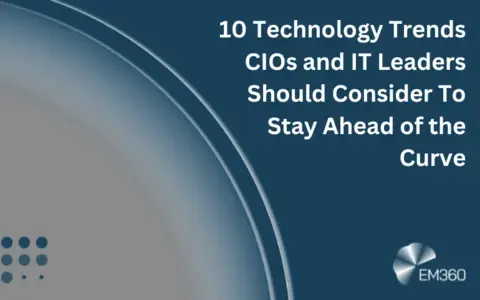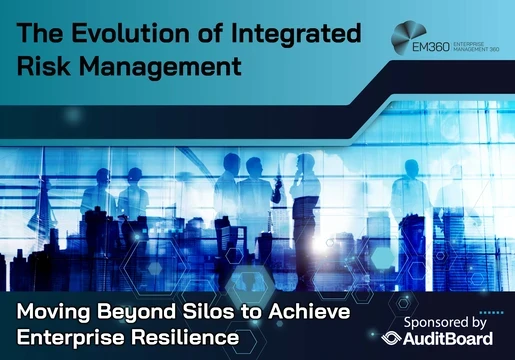
In response to shifting consumer habits and technology, many organisations have been able to advance digital goals since 2020 rapidly. Gartner reports that 70% of CIOs are now "the leaders of high-impact initiatives". Therefore, executives turn to IT leaders and CIO Newsletters strategy for information about strategic technology trends. They want to be informed about the potential benefits and risks.
These trends will impact their future, and CEOs expect you as a leader to demonstrate this. Find out the top tech trends and how IT leaders and CIOs can use them to help build resilience and ensure their future.
1. Assess and improve foundational technologies
Gartner predicts that "cloud-native platforms (CNPs) will serve as the foundation of more than 95% new digital initiatives by 2025 - up from less than 40% 2021." Organisation leaders who are less advanced in digital efforts will need to conduct an assessment, prioritise cloud environments and decide where to begin.
Review your existing cloud infrastructure and software as a Service (SaaS) tools, and consider how your needs will change over the next few years. It is also essential to evaluate emerging technologies, such as virtualisation and edge computing, and the technologies necessary to support them.
2. Enhance WFH experiences
Working remotely (WFH) or in distributed teams can change how people work. Many organisations are now reviewing their operating models for remote or hybrid work. Garter predicts that distributed enterprise models will help companies achieve revenue growth 25% faster than their peers.
CIOs need to evaluate technology and workflows to ensure smooth work experience and positive business impacts. CIOs are crucial in improving the employee experience. A digital strategy that works for workers will result in a faster return on investment (ROI), which is essential for recruiting and retaining top talent.
Digital workplaces can be excellent places for people to start. A central system can improve employee engagement and productivity. It allows employees to communicate and work together naturally, like in the office.
3. Accelerate Business Processes
Business process management (BPM), or workflow automation, is a requirement for CIOs. According to IDG's 2021 State of the CIO, 81% of respondents believe that automating IT and business processes will become more critical in the next six to twelve months. 56% of CIOs also stated that their top revenue-generating strategy was to create new products or services by automating business or IT processes.
Automating repetitive tasks every day can increase your company's productivity. Once you have identified functions that can be automated, match them with your business goals to determine the best tools to do the job.
Common workflows that CIOs automate to increase business productivity include:
- Receivables
- The hiring process
- Orders
- Onboarding employees
- Processing of Claims
- Retention and analytics for employees
4. Take on AI and ML Projects
Current generative AI is responsible for less than 1 per cent of all data. Organisations increasingly turn to generative AI to create software code or target marketing. According to the IDG CIO Technology Priorities Survey, 21% of organisations have already started using AI and ML technologies and 46% plan to increase their spending.
AI and ML enable workers to do their jobs better using intelligent tools and services powered by AI and ML. AI is used in all aspects of business, including lead qualification and predictive maintenance.
5. Autonomic Systems: Long-term Thinking
Autonomic systems may be the solution for leaders looking to scale and future-proof their companies. According to Dynatrace's 2020 Global CIO Report, 65% of US-based CIOs believe that the complexity of their cloud environments has outstripped their ability to manage. Autonomic systems can learn from these environments and reduce the need to update external software.
Autonomous IT gathers data and supplies IT leaders with optimisation options and predictions for future problems. While we tend to see autonomous systems in security, they are used in intelligent spaces and manufacturing machines. Gartner predicts that this technology will mature in the next five years.
6. Prioritize Cybersecurity
Customers and vendors are affected by your security measures, so it is essential to plan for the future. Data breaches can cause reputational damage and result in your vendors or customers being unable to access their accounts or other business-critical tools. According to IDG, 65% of IT executives plan to spend more on cybersecurity initiatives. 25% stated that forensics and real-time security monitoring are their top priorities.
Gartner reports that privacy-enhancing computation (PEC) and cybersecurity mesh architecture (CSMA) are the two most important tech trends. By 2025, three out of five large companies will employ one or more PEC methods. Gartner also predicts that organisations will adopt a CSMA to integrate security tools into a cooperative ecosystem by 2024. will lower the average financial impact of security incidents by 90%.
Cybersecurity requires continuous employee training and the right tools for managing virtual workspaces. CIOs need to consider cybersecurity when planning digital initiatives. Your systems are protected against future threats if you take a proactive approach to digital transformation.
7. Enhance the Total Experience (TX).
Gartner states that the goal of TX "is to drive greater customer confidence, satisfaction and loyalty, loyalty, and advocacy." There are currently too many silos, with different teams working on customer (CX), user (UX), employee (EX) and multi-experiences (MX).
CIOs should instead consider merging CX with EX to increase revenue. Companies that combine EX and CX in a coherent strategy achieve more significant experience goals and reap more benefits. There are also challenges. An ESI ThoughtLab and ServiceNow study found that executives must fully fit into EX and CX benefits.
To invest in total experiences strategies, CIOs must link Texas activities to the overall business goals and clearly explain the benefits. TX goals achieved not only in the next year but also in the future.
8. The Right Skills for Curating Staff
IDG reported that 47% of IT leaders need to be proficient. CIOs must make it a priority to retrain and retain employees. Although managed service providers and contractors may be able to fill this gap, upskilling or reskilling employees will improve resilience. According to IDG, 75% of SMBs, 67% of Enterprises, and 67% of SMBs are "upskilling existing employees to meet demand." In contrast, only 63% of SMBs, and 55%, are reskilling employees.
Leaders and workers can create individual employee dashboards that include professional development opportunities, surveys, training options, and other information. It helps them find similar skills and prepare for the future. You can use insights from other digital objectives for insight into the skills and talents of your team.
9. Digital Initiatives: Leverage Data
Companies and leaders can be overwhelmed by the sheer volume of data. More data analytics and skilled personnel are needed. We are rushing towards corporate environments that measure everything. IoT sensors, connected machines and smart factories monitor the environment and provide safety and efficiency improvement.
CIO leaders have to transform data into insights that support mission-critical projects. Data fabric technology could be a solution. Gartner states that data fabric technology can improve data usage dynamically with its inbuilt analytics. It can reduce data management efforts by up to 70% and accelerate time to value.
10. Create a Future-Forward, Trusted Brand
CIOs need to understand and prioritise the technologies that will drive business success. Every digital transformation goal must build trust and confidence within your company. By identifying value-added initiatives, you can build resilience and guide your company into the future.
- Log in to post comments



Comments ( 0 )